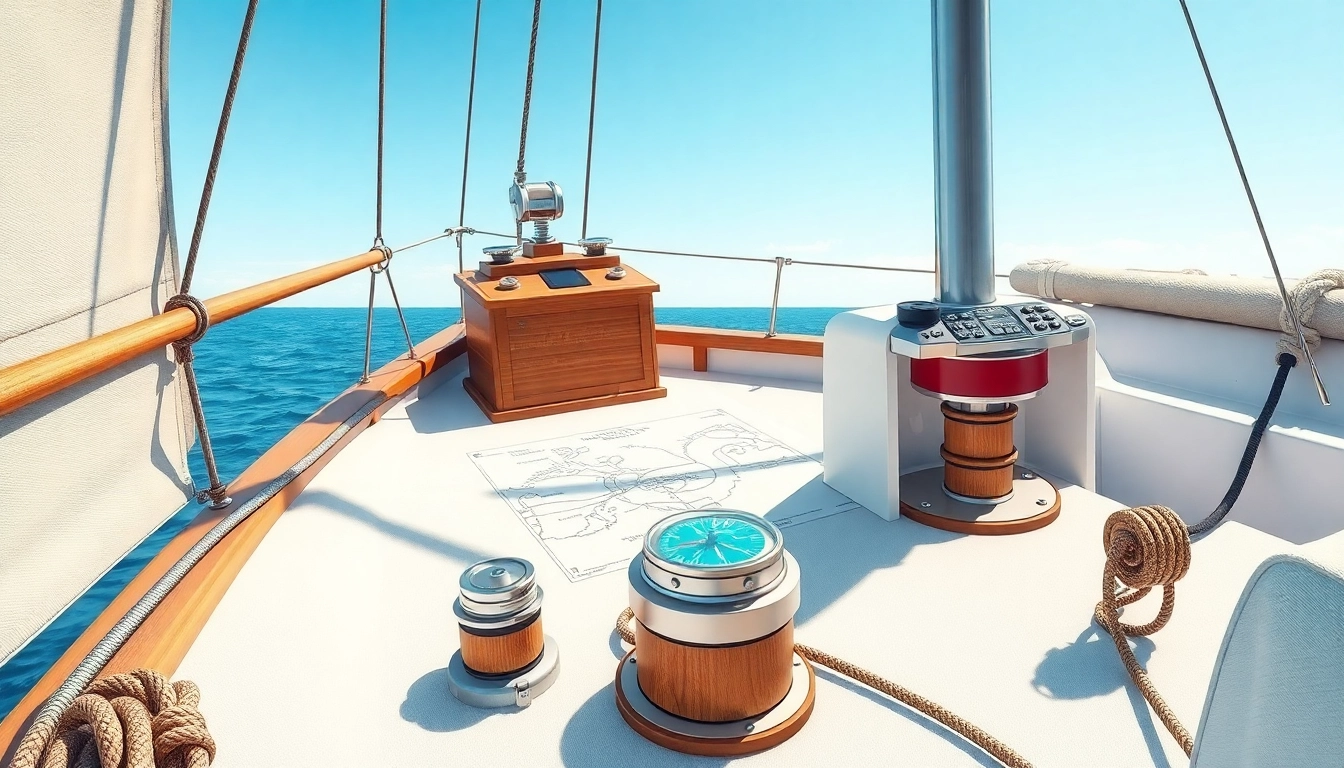Introduction to Marine Navigational Techniques and the Role of Accurate Passage Planning
Navigation at sea requires a comprehensive understanding of various methods to determine a vessel’s position and course accurately. Among these, Boots Versegelung plays a vital role, especially when venturing into open waters or unfamiliar territories. Correct application of navigational principles ensures the safety of everyone onboard and guarantees efficient route planning. In this detailed guide, we explore the fundamentals of terrestrial navigation, the significance of precise Versegelung, and modern tools and techniques essential for both novice and experienced seafarers.
Fundamentals of Terrestrial Navigation
Understanding Basic Concepts
Terrestrial navigation on boats involves using visible landmarks, compass bearings, and mathematical calculations to locate the vessel’s position relative to known points. Unlike satellite-based GPS, terrestrial methods are invaluable during electronic failures or in situations requiring validation of electronic systems. The core components include bearing measurements, triangulation, and map plotting. These techniques form the foundation for effective navigation, forming the backbone of safe passage planning and execution.
The Significance of Accurate Versegelung in Navigation
The art of accurate Boots Versegelung enables mariners to determine their exact location via precise angle measurements to fixed objects. This method not only supports plotting courses but also acts as a vital backup in electronic navigation systems. Properly executed, it facilitates clear decision-making, minimizes risks of drift or miscalculation, and enhances overall safety during maritime operations. As such, mastering terrestrial navigation techniques, including Versegelung, is indispensable for both amateur sailors and seasoned navigators.
Key Navigation Terminology
- Bearing: The angle between a reference direction (usually north) and a line to an object.
- Standlinie: A line plotted on a chart representing the line of sight or measurement toward a landmark.
- Peilung: The process of measuring the angle between the vessel’s heading and a visible object.
- Triangulation: Using two or more bearings to calculate the exact position via intersection points.
- Strecke: The distance traveled or the length of a measured course segment.
Techniques and Methods of Boots Versegelung
Correct Application of Standlinien and Angle Measurements
At the heart of terrestrial navigation lies the ability to accurately determine and plot standlinien. This involves visual identification of landmarks and precise measurement of angles using a compass or binoculars with angle gauges. Step-by-step, mariners:
- Identify a landmark with a known position relative to the boat.
- Use a protractor or navigational compass to measure the bearing to the landmark.
- Plot the bearing on the chart as a standlinie.
- Repeat the process at different points to intersect lines and pinpoint the vessel’s location.
Rechnerische Methoden zur Standortbestimmung
Mathematical calculations complement visual measurements, especially when determining the intersection points for multiple bearings. Trigonometry, particularly the Law of Sines and Cosines, transforms angle and distance measurements into precise position estimates. Modern sailors utilize tools such as calculators or specialized navigation software that incorporate these formulas, thus reducing human error and expediting the process. Regular calibration of instruments and cross-checks with known landmarks are recommended for accuracy.
Comparison of Peilungsarten
There are various approaches to Peilung, each suited to different situations:
- Relativpeilung: Bearing to a moving or fixed object relative to the vessel’s current heading, often used during underway navigation.
- Absolutpeilung: Bearing to a well-charted, fixed object, usually using magnetic or true north references.
- Geradepeilung: Straight-line measurement from the vessel to the object, ideal for triangulation.
Common Challenges and Practical Tips in Boots Versegelung
Hindernisse und Fehler bei der Peilung vermeiden
Perfecting the technique involves overcoming typical issues such as:
- Inaccurate angle readings due to instrument misalignment.
- Difficulty in identifying landmarks under adverse weather conditions.
- Parallax errors when viewing through optical devices.
- Misinterpreting magnetic declination or local variations.
To mitigate these, always double-check instruments, use bright, easily distinguishable landmarks, and account for magnetic declination on your charts.
Praktische Tipps für präzise Peilungen
- Ensure your compass or angle-measuring device is calibrated and properly held steady.
- Use binoculars with built-in compass for better viewing and measurement accuracy.
- Mark bearings on your chart immediately after measurement to prevent errors.
- Regularly update your navigational charts and declination adjustments.
Pflege und Wartung der Navigationsgeräte
Maintaining your tools in top condition maximizes longevity and accuracy. Clean optical surfaces, store instruments in dry environments, and calibrate frequently. Investing in high-quality devices suitable for marine conditions is essential for reliable navigation.
Modern Tools and Equipment for Boots Versegelung
Navigational Instruments and Peilgeräte
Traditional tools include magnetic compasses, protractors, and visual aids like binoculars. Electronic equivalents feature GPS backups, digital compasses, and angle-measuring devices with digital readouts. Combining both ensures redundancy and higher precision.
Software and Apps for Modern Navigation
Navigation apps and professional software facilitate real-time plotting, bearing measurement, and route optimization. Features often include automatic declination correction, virtual charts, and integration with satellite data, greatly enhancing accuracy and ease of use.
Recommended Equipment for Beginners and Experts
- Beginner: Basic magnetic compass, handheld binoculars, printed nautical charts.
- Professional: Electronic angle gauges, chart plotters, integrated navigation systems, and backup tools like sextants for celestial navigation.
Guide to Enhancing Your Seek Chart Techniques
Steps for Correct Application of the Versegelung
- Identify suitable landmarks with known coordinates.
- Use reliable instruments to measure bearings accurately.
- Plot the bearings, ensuring correct scale and orientation on your marine chart.
- Intersections of standlinien reveal your current position, which can be verified through multiple measurements.
Integrating Peilung into Overall Navigation
Combine terrestrial methods with electronic navigation tools for comprehensive situational awareness. Cross-reference GPS data with visual bearings and triangulation results to verify and refine your course.
Measuring, Analyzing, and Optimizing Course Guidance
Constantly monitor your position relative to planned waypoints. Adjust your course proactively based on real-time measurements and anticipated environmental influences like currents and wind drift. Post-voyage analysis helps improve future navigation techniques and instrument calibration.


